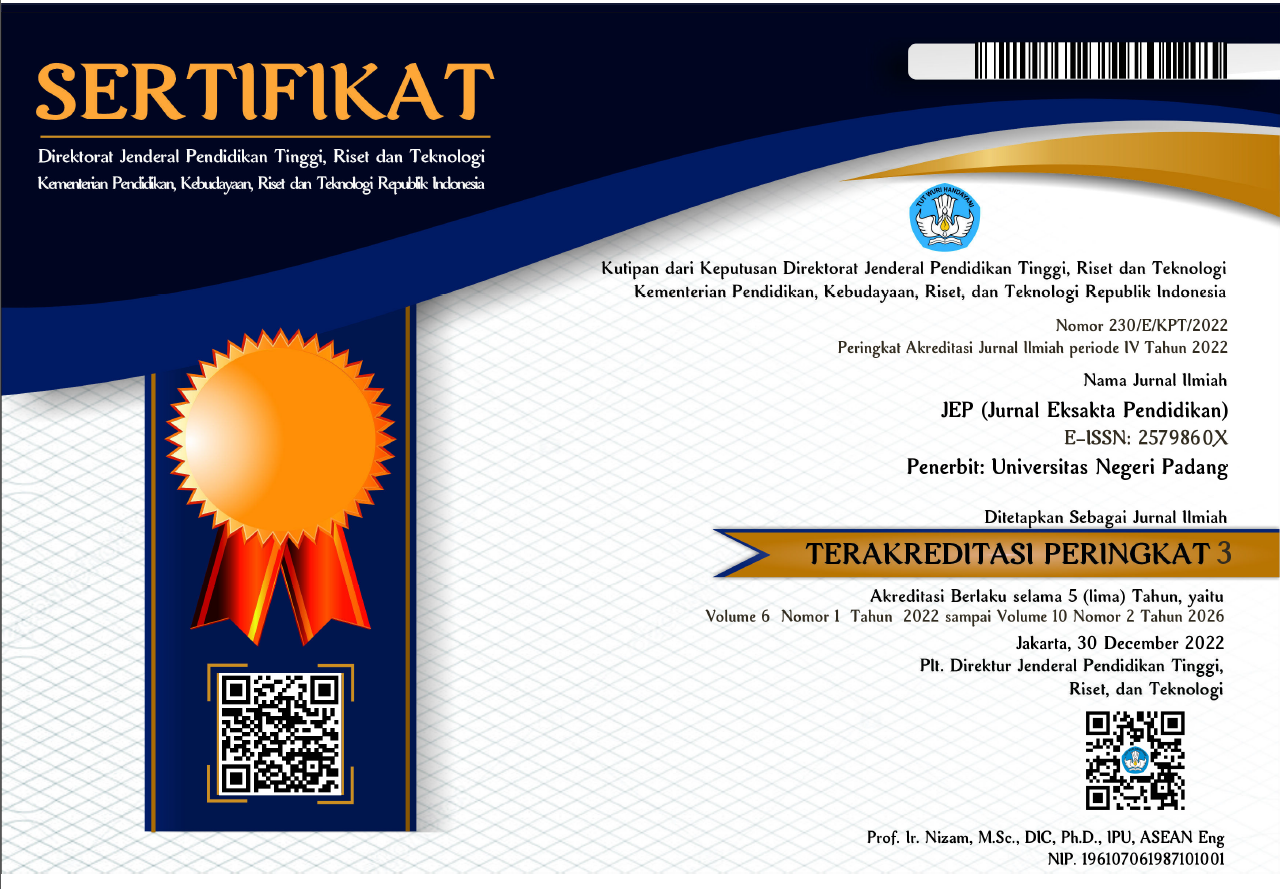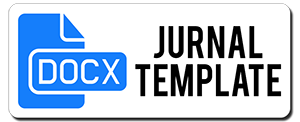Analisis Kebutuhan Pengembangan Bahan Ajar IPA Terpadu Bermuatan Literasi Era Digital untuk Pembelajaran Siswa SMP Kelas VIII
Abstract
Science learning should be able to develop the ability to think, to work, to use tools, and to live in the world for students. Integrated Science learning and integration of digital age literacy give good opportunities for students to develop fourth of these skills. But the reality shows that the implementa-tion of integrated science learning and integration of literacy in learning can’t be implemented well. An alternative solution of this problem is to develop integrated science learning by integrating digital age literacy. Before developing this integrated science materials it is necessary to conduct preliminary research as a basis for designing this learning materials. The purpose of this preliminary research is to describe the integration of knowledge basic competencies of science subjects, the implementation of integrated science learning, the learning materials available for science learning, and the integrating literacy of students. The type of research was descriptive research method. As object of the research consist of science teachers, syllabus and science learning materials, and students of grade VIII in ju-nior high school. Instruments to collect data consist of interview guide sheet, science syllabus and learning materials document, and digital age literacy test sheet. Research data was analyzed with de-scriptive statistic. Base on data analysis can be stated that results of this research are: 1). integrated science learning on grade VIII junior high school students can’t be implemented well, 2). the value of integration of science learning materials and its application in knowledge basic competence can be classified into enough category, 3). generally science learning materials in integrated science text-books and science worksheet on grade VIII junior high school are still separated form, and 4). the average value of digital age literacy of students is classified into low category.
Downloads
References
Akani, Omiko. 2016. An Evaluation of Class-room Experiences of Basic Science Teachers in Secondary Schools in Ebonyi State of Nigeria. British Journal of Education Vol.4, No.1, pp. 64-76.
Gurria, Angel. 2010. PISA 2009 Results: What Students Know and Can Do. Student Performance in Reading, Mathematics and Science. Programme for International Students Assessment, OECD.
Gurria, Angel. 2014. PISA 2012 Results in Focus: What 15-year-olds know and what they can do with what they know. Programme for International Students As-sessment, OECD.
Ogunkola, Babalola J. 2013. Scientific Literacy: Conceptual Overview, Importance and Strategies for Improvement. Journal of Educational and Social Research. Vol 3 (1)
Olayinka, Abdu-Raheem Bilqees. 2016. Effects of Instructional Materials on Secondary Schools Students’ Academic Achievement in Social Studies in Ekiti State, Nigeria. World Journal of Education. Vol. 6, No. 2.
Maryati, Purwanti Widhy Hastuti, dan Eko Widodo. 2012. Tingkat Pemahaman dan Ke-sulitan Pelaksanaan Pembelajaran IPA Terpadu SMP/MTS di Daerah Istimewa Yogyakarta. Universitas Negeri Yogya-karta.
Nomini, Rosiana. 2015. Penggunaan Metode Kesebangunan untuk Meningkatkan Ke-mamampuan Penerapan Konsep Fisika Siswa Kelas VIII SMP PGRI 396 Kelapa Dua Pada Materi Cahaya. Prosiding Seminar Nasional Fisika (E-Journal) SNF, Volume 4.
Paige, Kathryn. 2016. Slowmation: An Innova-tive Twenty-First Century Teaching and Learning Tool for Science and Mathematics Preservice Teachers. Australian Journal of Teacher Education, Volume 41, Issue 2
RTI International. 2014. Prioritizing Reform, Innovation, and Opportunities for Reaching Indonesia’s Teachers, Administrators, and Students. Pembelajaran Literasi Kelas Aw-al SD/MI di LPTK. United States Agency for International Development (USAID).
Sugiyono. 2014. Statistika untuk Penelitian. Bandung, Penerbit Alfabeta.
Suhartatik. 2016. Pengembangan Modul IPA SMP Berbasis Guided Discovery untuk Meningkatkan Kemampuan Berfikir Kog nitif dan Hasil Belajar Siswa. Prosiding Seminar Nasional Pendidikan IPA Pasca-sarjana UM, Vol. 1
Sukardi. 2004. Metodologi Penelitian Pendidi-kan: Kompetensi dan Praktiknya. Jakarta, Penerbit Bumi Aksara.
Wahyuni, Sri. 2015. Pengembangan Bahan Ajar IPA Untuk Meningkatkan Kemampuan Berpikir Kritis Siswa SMP. Jurnal Materi dan Pembelajaran Fisika (JMPF) Volume 5 Nomor 2.
Yuliati, L. 2013. Efektivitas Bahan Ajar Terpadu Terhadap Kemampuan Berpikir Tingkat Tinggi Siswa SMP. Jurnal Pendidikan Fisika Indonesia 9: 53-57, ISSN: 1693-1246

This work is licensed under a Creative Commons Attribution 4.0 International License.




_(2579-860X).png)
_(2614-1221)1.png)




